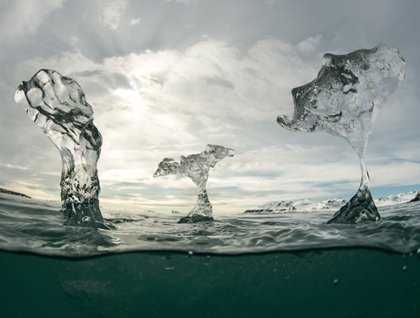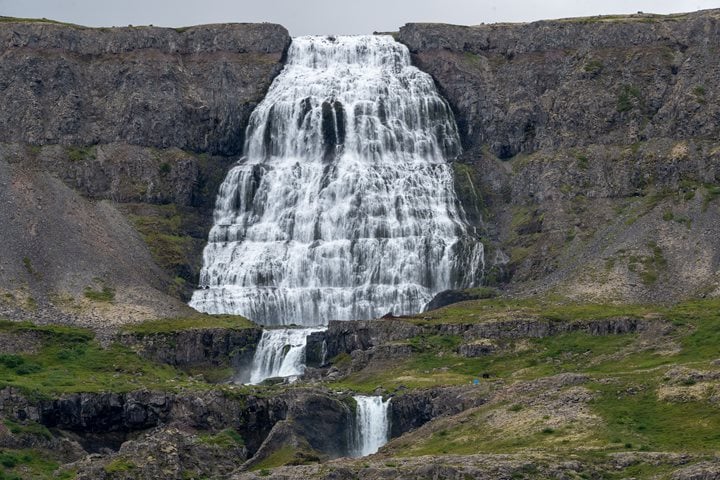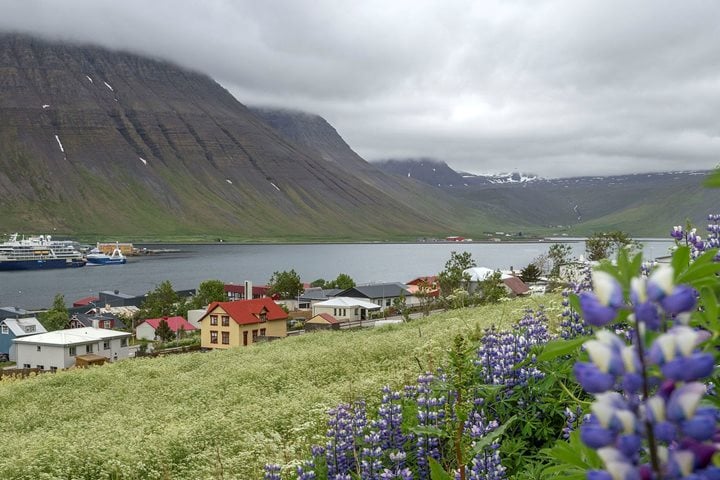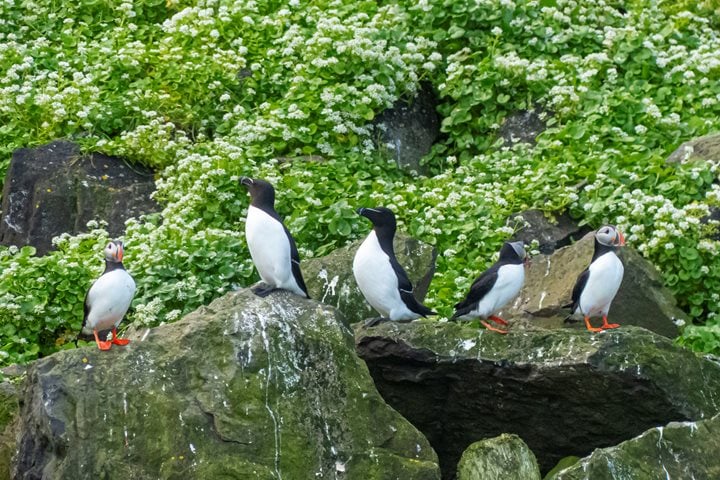Our first full day in the Arctic is complete- not that yesterday really ended if you come from the perspective of the lower latitudes where the sun actually sets! I’m not sure about you but my day began at 3 a.m. with vibrant rays of sunlight bending towards my face through a double-paned porthole. Set in motion at that hour by the sun hanging a healthy 20 degrees in the sky, I ventured out on deck to be greeted by a great swath of Spitzbergen’s western coastline a few miles ahead. Outlined with jagged peaks belying its Norwegian name (spiky mountains) the atmosphere seemed to suggest calm, stable weather for our first day ashore.
A slow approach to this western stretch of the Svalbard Archipelago bought us time to cover the logistics of an expedition to the high arctic: polar bear safety, Zodiac operations, the nuances of kayaking in cold waters, etc. As our informational morning progressed so did we, in the direction of a large fjord known as Krossfjorden. Just before the lunch hour we reached its northern reaches, coming face to face with an imposing ice barrier that feeds Krossfjorden a healthy supply of ice throughout the year. Lilliehöökbreen is a large tidewater glacier that is fed by catchment basins in the high mountains surrounding the northern end of the fjord. Pouring down in all directions like an amphitheater of ice our captain positioned us right along its frozen edge for a display of natural power not easily matched. Breaking off along a weak point in the ice wall a 70 foot tall, apartment sized piece of ice was born into its new role as “iceberg” before our very eyes. This adjustment triggered a domino effect of glacial collapse that left us rocking in its wake.
Heading back south through Krossfjorden after lunch we anchored near a location known as Stefan’s Garden. Aptly named this west facing length of beach is well influenced by the North Atlantic Drift bringing warmer water from the Gulf Stream to these shores and helping a diverse community of wildflowers thrive in an otherwise inhospitable climate. Between perfect kayaking conditions and the opportunity to get ashore for the first time in the remote regions of Svalbard, our afternoon was picture perfect. Hikers took to the moss laden tundra while yellow kayaks dotted the calm, icy waters around our ship. Atlantic puffins, thick-billed murres, common murres, barnacle geese, and eider ducks all made a healthy appearance on the water while tufted saxifrage, moss campion, and Svalbard poppy graced the paths taken by the shore party. With nothing more than a light drizzle to contend with, a silvery, sun-patched sky quickly returned and ushered us into the closing hours of the day-a day not defined by sunrise and sunset but by boughs of beauty followed by a few hours of sleep.







